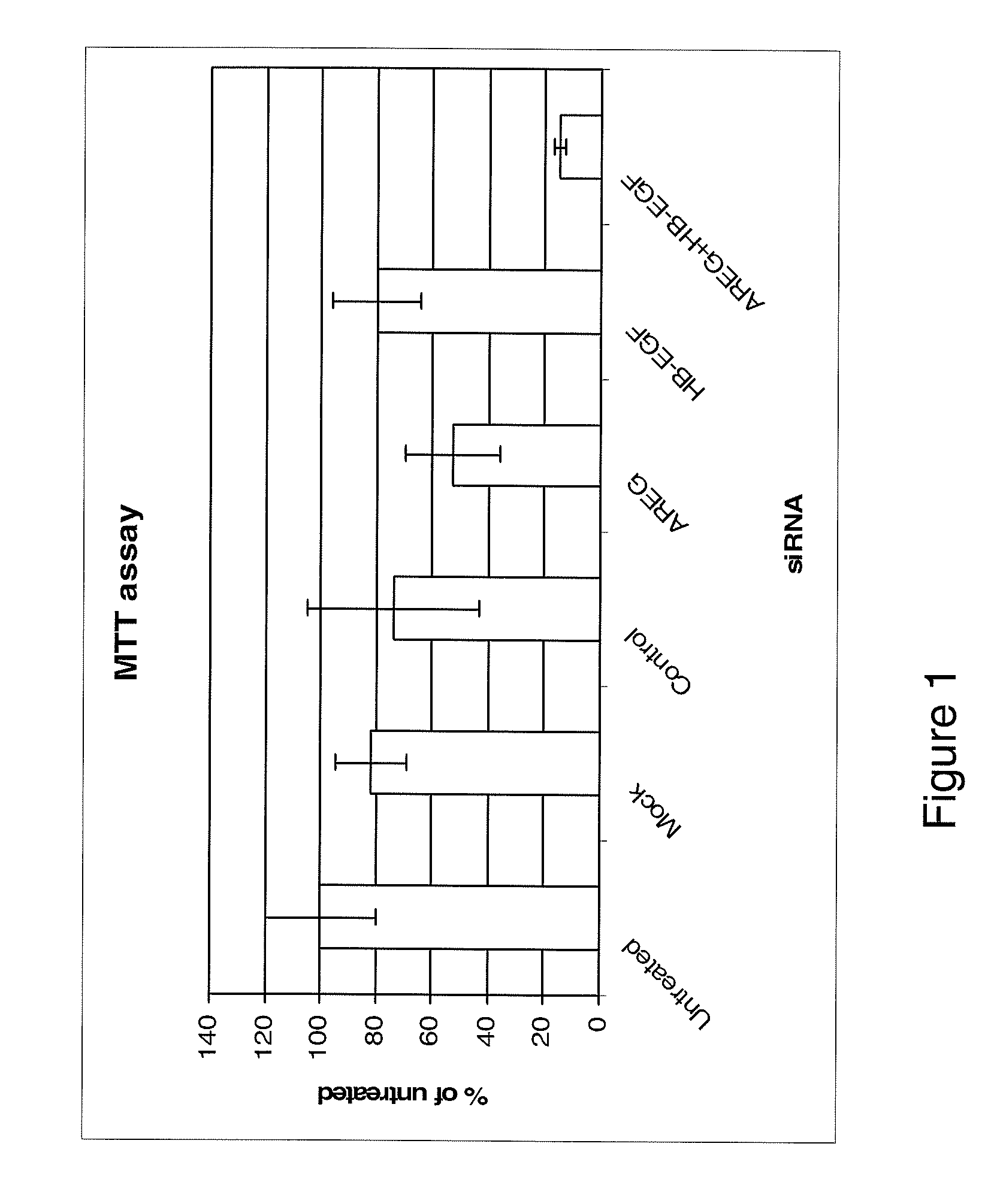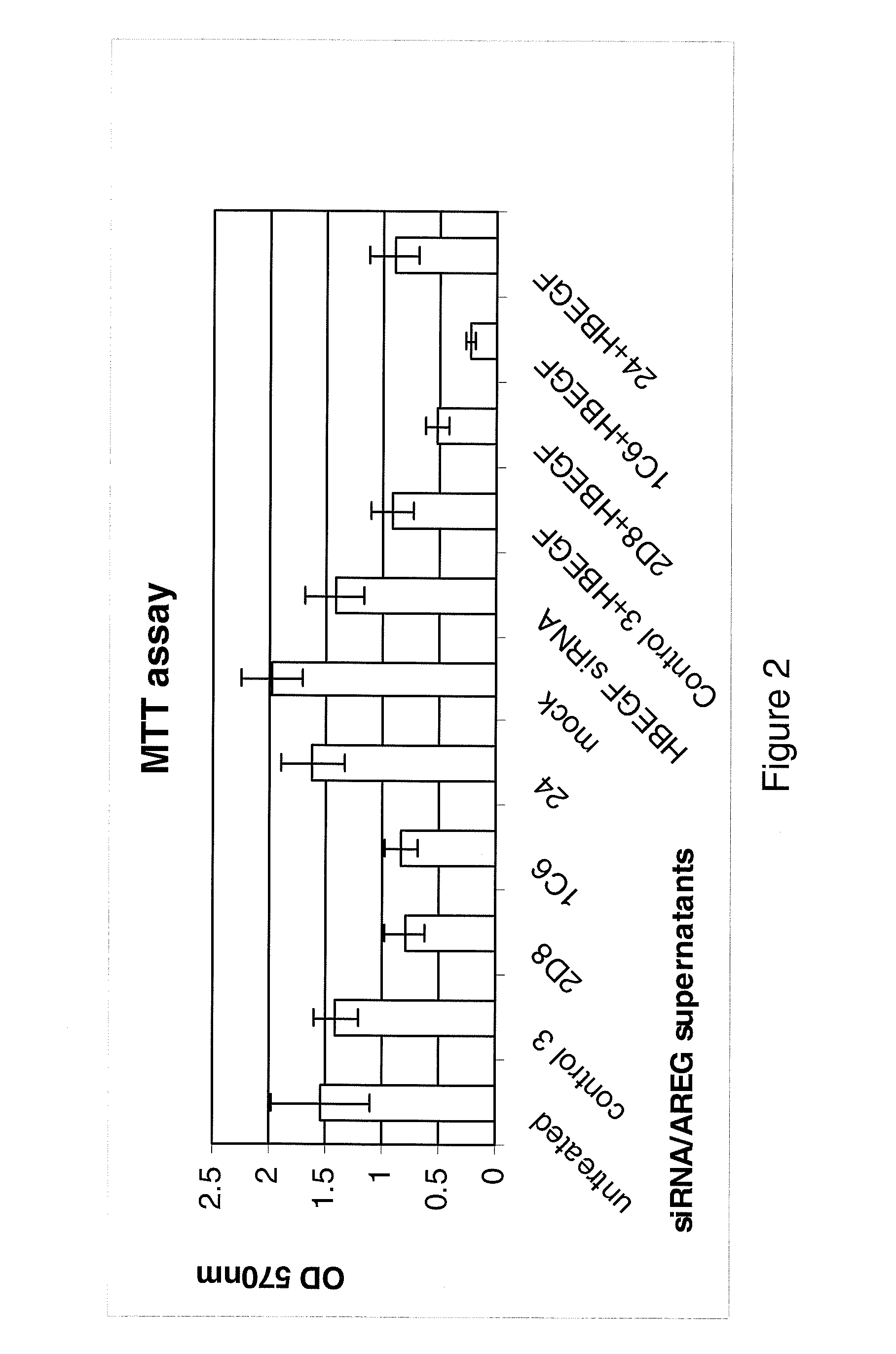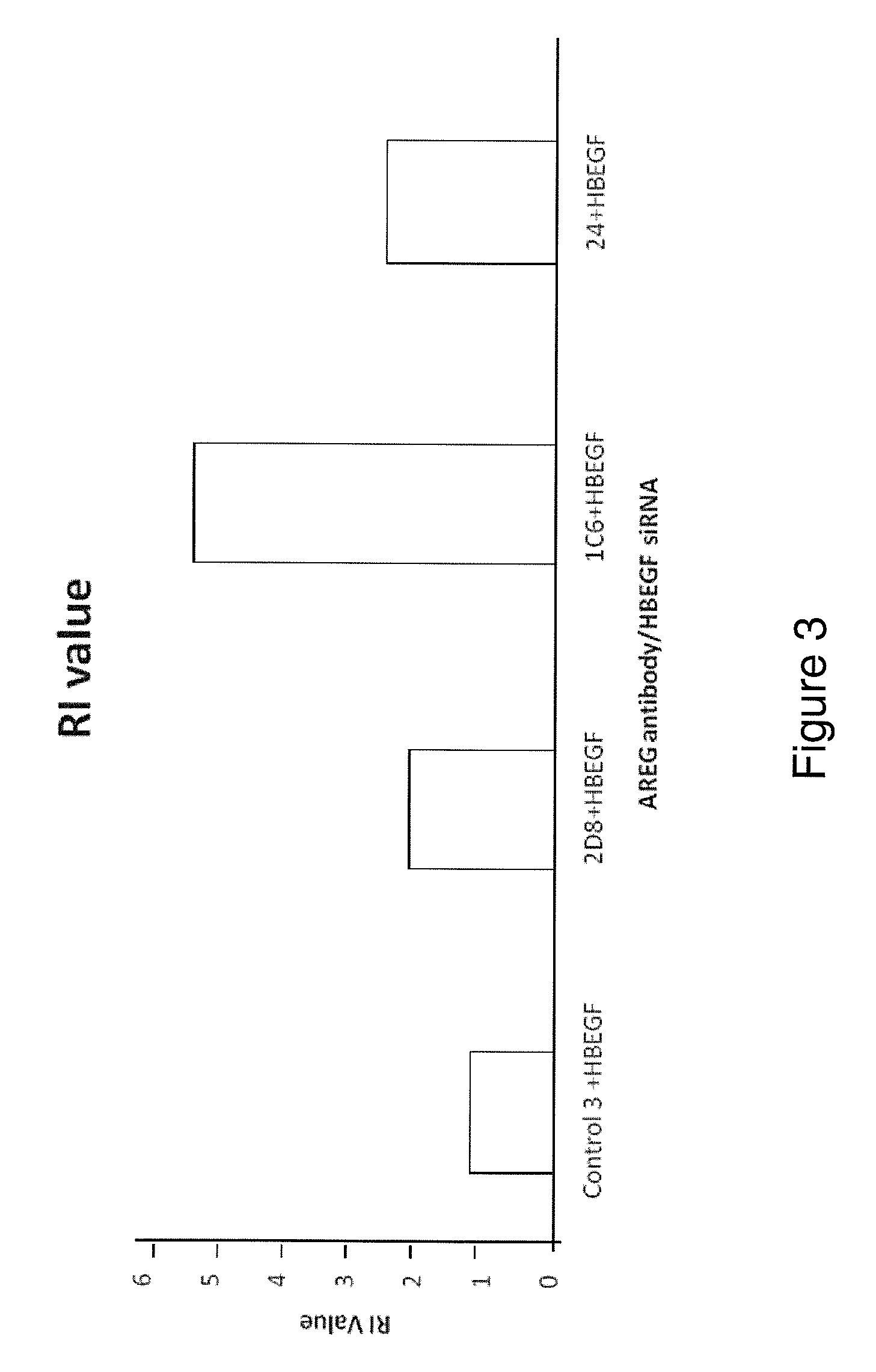Anti-AREG/HB-EGF antibodies and treatment
a technology of antibodies and tumour cells, applied in the field of cancer treatment, can solve the problems of limiting the use of chemotherapeutic agents, the need to change the treatment of patients with cancer, and many patients still cannot be treated through these regimes, and achieves the effect of increasing cell invasiveness and enhancing the binding of antibodies to tumour cells
- Summary
- Abstract
- Description
- Claims
- Application Information
AI Technical Summary
Benefits of technology
Problems solved by technology
Method used
Image
Examples
examples
Methods
Cell Lines and Culture Conditions
[0201]The MDA-MB231 human breast carcinoma cell line and the HT29 human colorectal carcinoma cell line were maintained in in Dulbecco's Modified Eagle's Medium (DMEM, Invitrogen, UK). The HCT116 (p53 wild type) human colorectal adenocarcinoma cell line was maintained in McCoys (Invitrogen, UK). All medium was supplemented with 10% FCS normal (Invitrogen, UK) or dialysed (Autogene Bioclear, UK)), 1% pen / strep, 1% L-Glutamine (All Invitrogen, UK).
RNA Interference
[0202]AREG, HB-EGF and Control siRNAs and Dharmafect 4 transfection reagent were obtained from Dharmacon, (Lafayette, Colo., USA).
[0203]Cells were seeded at 5 000 cells per well in a 96 well plate or 5×105 cells per well in a 6 well plate. The cells were cultured for 24 hours before transfection. The siRNA was made up to 100 nM in serum free DMEM and left for 5 minutes at room temperature. The Dharmafect transfection reagent was also made up in the serum free DMEM and incubated for 5 min...
PUM
| Property | Measurement | Unit |
|---|---|---|
| time period | aaaaa | aaaaa |
| time period | aaaaa | aaaaa |
| time period | aaaaa | aaaaa |
Abstract
Description
Claims
Application Information
 Login to View More
Login to View More - R&D
- Intellectual Property
- Life Sciences
- Materials
- Tech Scout
- Unparalleled Data Quality
- Higher Quality Content
- 60% Fewer Hallucinations
Browse by: Latest US Patents, China's latest patents, Technical Efficacy Thesaurus, Application Domain, Technology Topic, Popular Technical Reports.
© 2025 PatSnap. All rights reserved.Legal|Privacy policy|Modern Slavery Act Transparency Statement|Sitemap|About US| Contact US: help@patsnap.com



